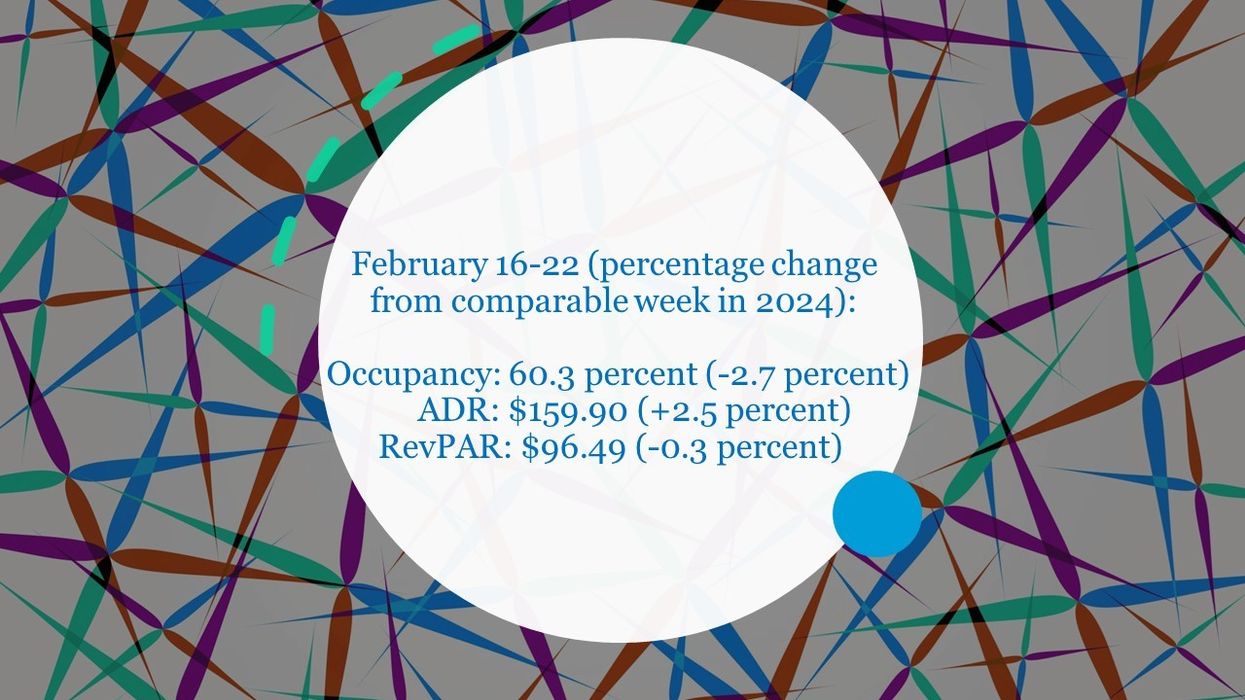U.S. Hotel Performance Overview for Feb. 22 Week
U.S. HOTEL PERFORMANCE showed mixed results for the week ending Feb. 22, according to CoStar. Occupancy increased from the previous week, while RevPAR and ADR saw slight declines, with year-over-year metrics also remaining subdued.
Occupancy rose to 60.3 percent for the week ending Feb. 22, up from 60 percent the previous week while remaining 2.7 percent lower than the same period last year. ADR declined to $159.90 from $164.79 but showed a 2.5 percent year-over-year increase. RevPAR fell to $96.49 from $98.93, reflecting a 0.3 percent decline from the previous year.
Among the top 25 markets, Los Angeles recorded the largest occupancy increase, up 10.4 percent to 74.8 percent, while RevPAR rose 16.7 percent to $147.34. New Orleans saw the only double-digit ADR gain, rising 10.9 percent to $197.41.
Las Vegas continued to see the sharpest performance declines, with occupancy dropping 14.3 percent to 69.6 percent, ADR falling 8.4 percent to $170.83, and RevPAR decreasing 21.4 percent to $118.86.













